Hyde Housing Framework Appointment.
Affordable housing is incredibly important across the whole of the UK and Hyde Housing are ...
Wide
Standard
Large Tablet
Small Tablet
mobile
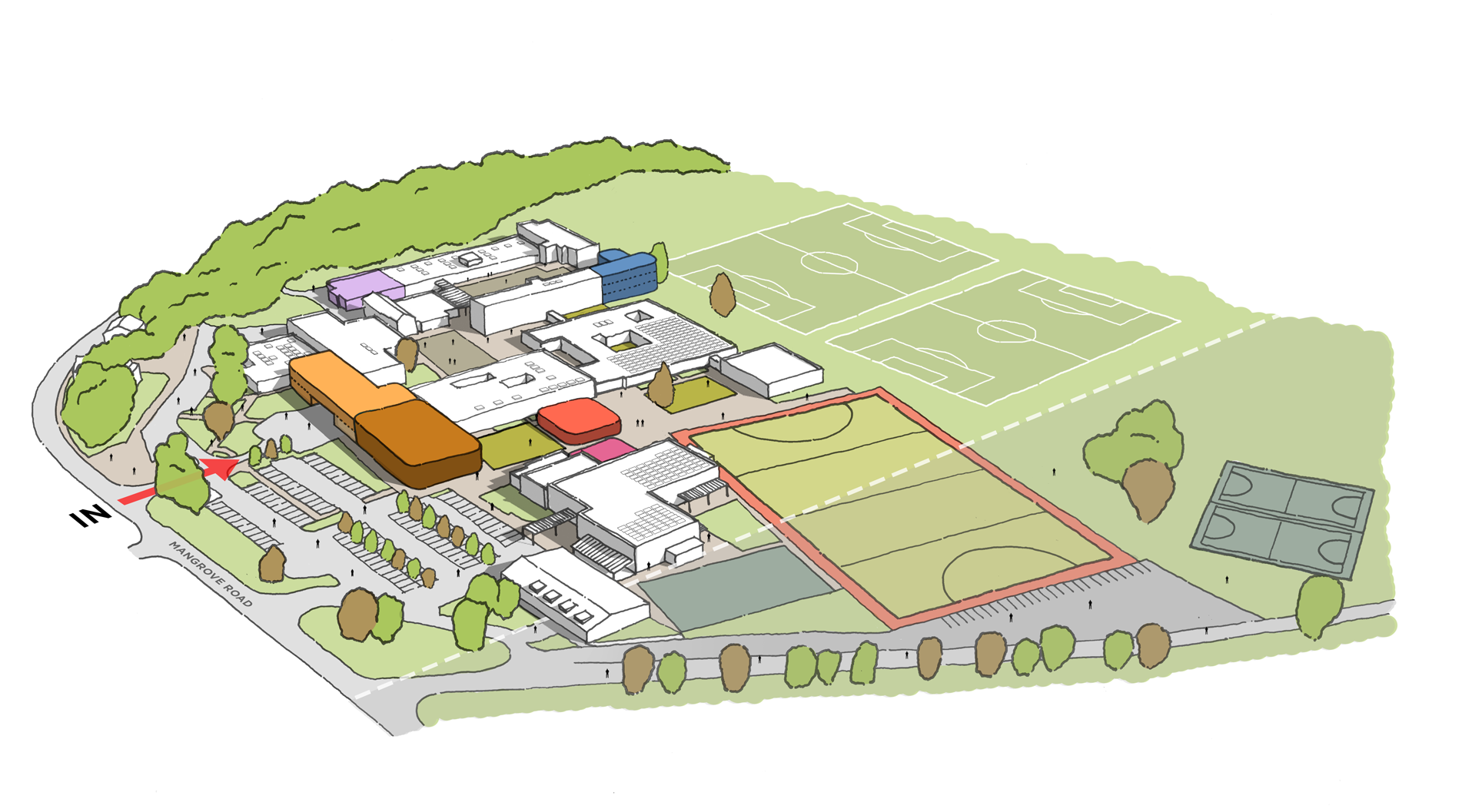
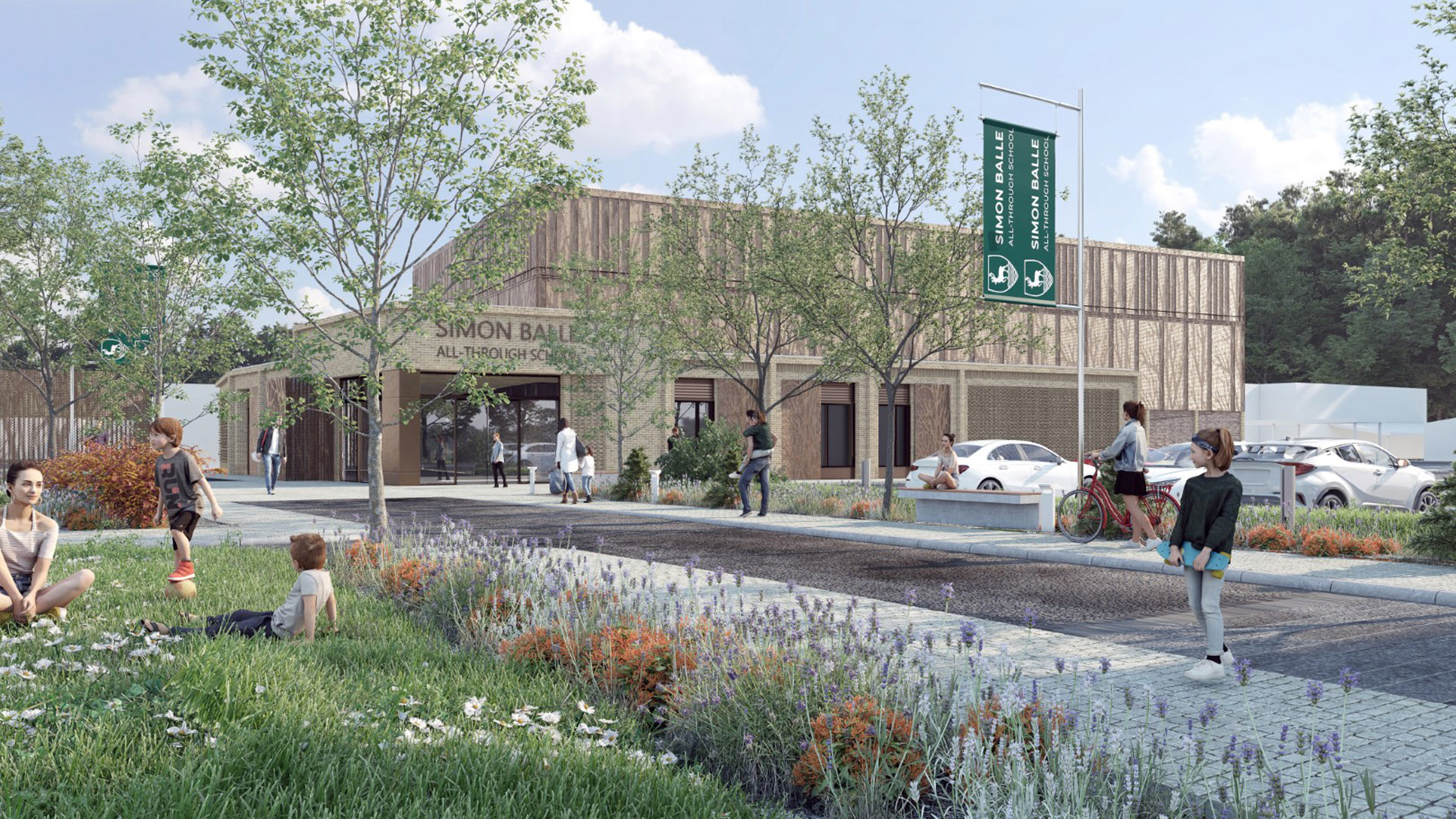
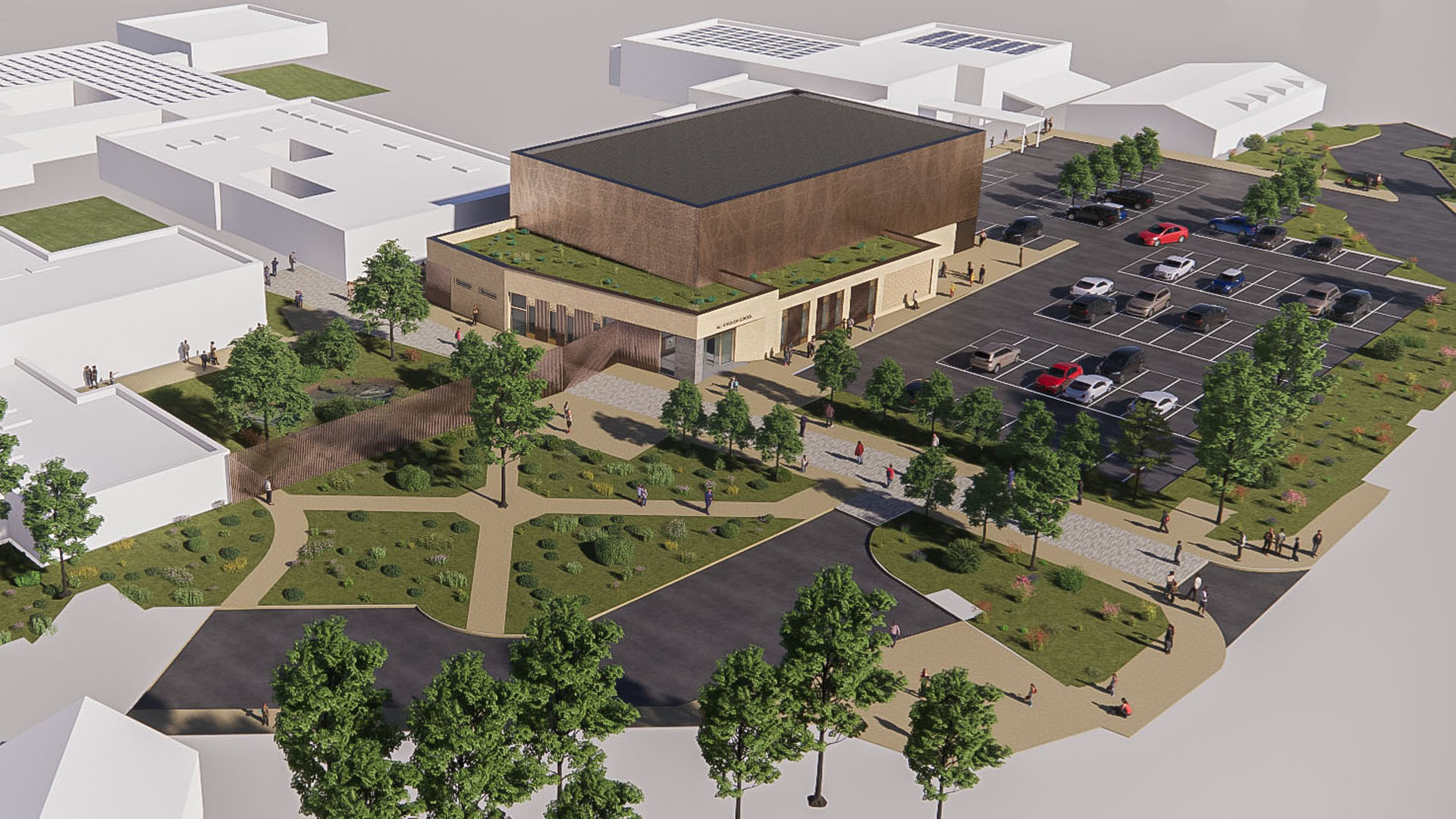
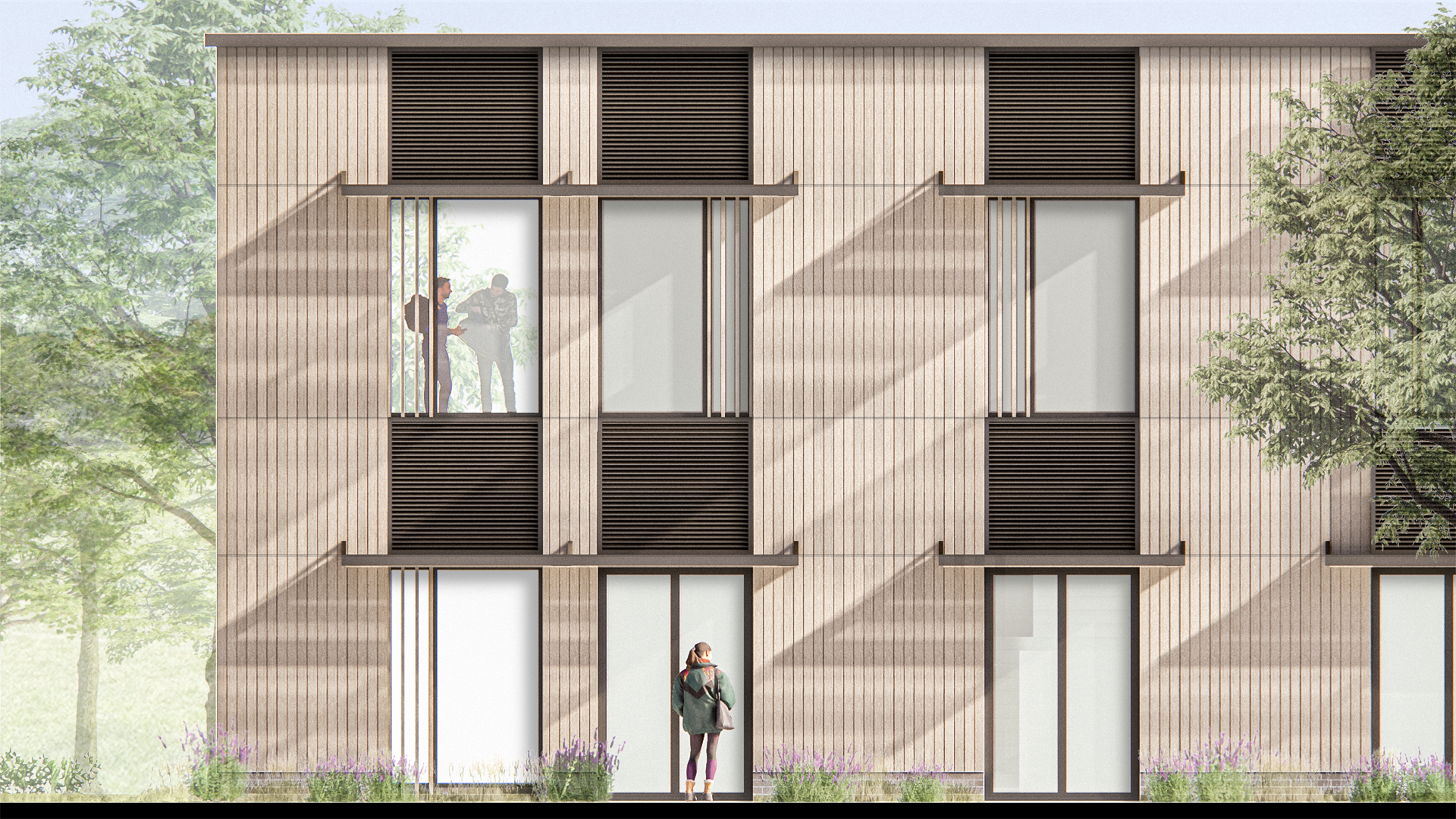
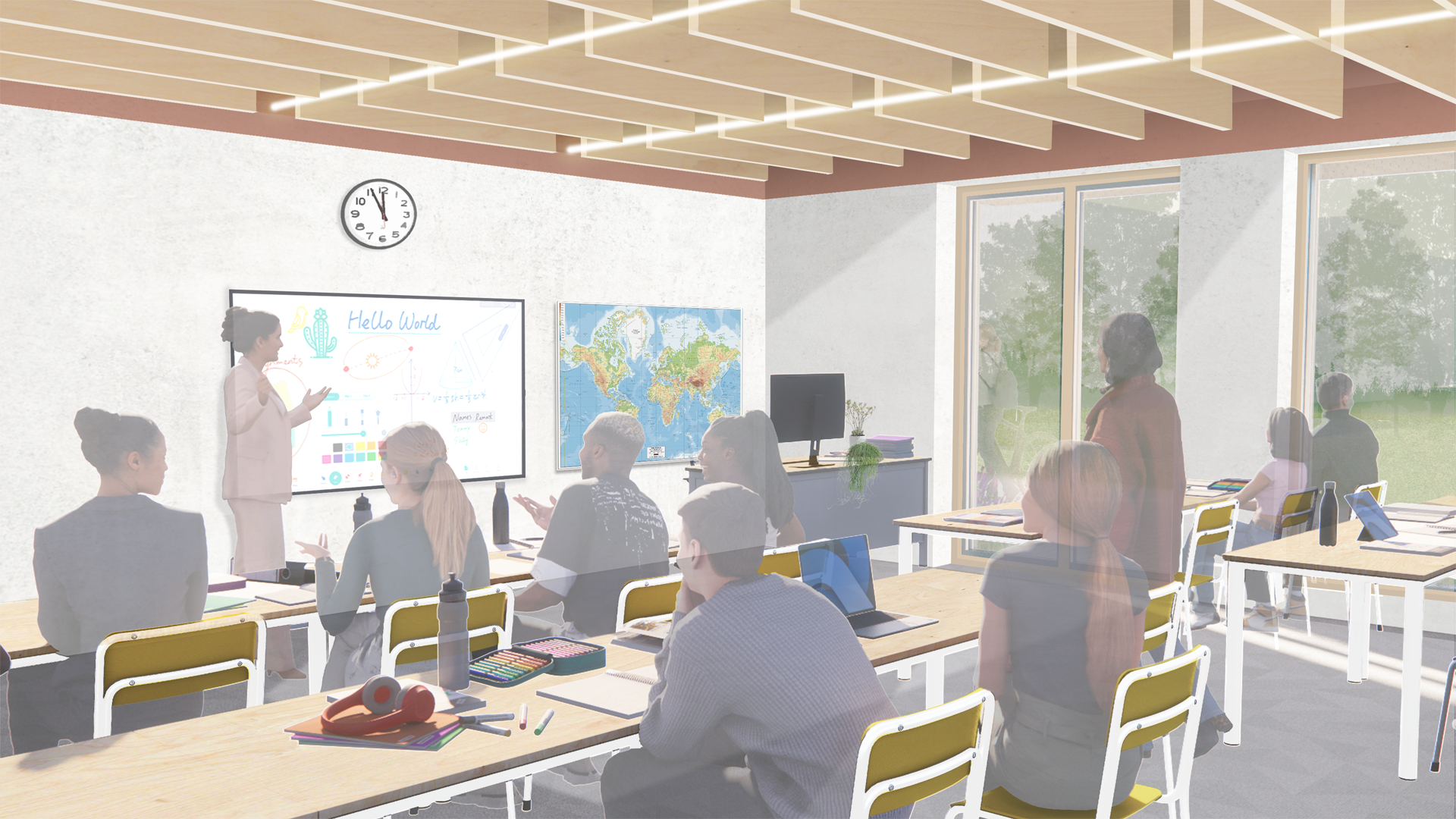
Five minutes with our client Haydn Walsh, Director of Business at Simon Balle School
The education team at Saunders has been working closely with Simon Balle School in Hertford on the development of their school site. Initially, the school required a sustainable and affordable phased masterplan for development over a 15 year period, to enable them to meet requirements for curriculum delivery and to plan expenditure and funding bids over the coming years.
To date, Saunders have developed a scheme for their new sports hall and reception. This prominent scheme, located at the front of the school site, has been submitted for planning approval. The sustainable proposal for the new building will enhance the arrival sequence at the school and provide high quality sports facilities for students and the local community. Saunders have also worked with the school on a teaching block proposal and the redevelopment of their sports changing facilities.
Haydn Walsh, Director of Business at Simon Balle, talked to us about their experience working with us on the proposals for the school:
* Why has it been helpful for your school to have a masterplan for development?
In schools, there are many stakeholders; each with their own agendas, priorities and preferences. The ever-changing educational landscape also means that schools have to be able to be flexible and responsive in their operations.
In a constantly shifting environment, it can be very difficult to formulate a strategy and make firm decisions. As a school, before we began working with Saunders and developing our masterplan, we absolutely recognised that we were going round and round in circles and spent a lot of time holding meetings and having conversations without delivering many meaningful outcomes. This also meant that we were being too reactive to issues as they arose, rather than being prepared. This meant that some decisions, made out of urgency, may have solved an immediate problem but actually hindered longer term planning by restricting design or development space and opportunities.
* How has the master planning development process helped with decision making?
With Saunders, we took a step back and looked at what the school needs now but also, what does it need and what do we want in two years; five years; ten years? Saunders were then able to help us identify how we can link these objectives together so that decisions we make now also lay the foundation for elements of development that we wish to carry out in a phased manner.
In this way, the masterplan has helped us to clarify the pipeline of work that needs to be carried out. For example, it is universally agreed that we need a larger dining and assembly hall and at first glance, this would be our highest priority and the next job to be done. However, there is only one location on our site where this could go. If we were to proceed now, it would require major works to be carried out on our mechanical and electrical infrastructure. There are other projects that we would like to carry out in the future that are lower priority than the dining hall but that also have M&E implications. Making partial changes to the M&E now to allow us to extend the dining hall would be of significant detriment to those future projects. Our masterplan has therefore identified that we should address our school-wide M&E infrastructure first to ensure that it has enough capacity and is flexible enough to cope with the scale of development required in the next 10 years.
* Is the masterplan a fixed proposal?
The masterplan is not a rigid, prescriptive document; this would not work for the reasons already described. What we think we want to have in five years might no longer be the case if a new government introduces new priorities or the Ofsted framework changes. However, what the masterplan does is show the potential of the various elements of our site and how they can be developed to meet current and future demands, even if those demands are not yet known. For example, we now know which parts of our site are most suitable for new buildings due to planning considerations. Within this reduced scope we can then identify which areas can be developed most cost effectively. We therefore now have the right balance of certainty to make decisions that are right for now, as well as the long term, and the flexibility of plans to be adaptable and responsive to changing circumstances.
* How has the masterplan helped with financial planning and funding?
The masterplan has helped us greatly with funding applications. By being prepared, with well-considered projects planned and surveys and investigations carried out, we are ready to jump onto any funding vehicles that become available with a strong application.
* What are the key challenges with regards to financial planning?
The original school was built in 1957 with all of the original blocks still in situ. These buildings were extremely poorly insulated with beyond end of life and inefficient M&E infrastructure. Making our site truly sustainable therefore requires significant investment. Some of the key financial challenges to making our site more sustainable that we have faced are:
Capital investment costs: Adopting sustainable practices may require significant investments in new technology, infrastructure, and equipment. For example, in a bid to reduce our carbon footprint we have invested in LED lighting, solar PV panels and improved building insulation. There is still significant scope for improvement through investment in additional renewable energy sources, energy-efficient appliances, or sustainable materials. These investments are costly and require significant upfront capital.
Lack of financial incentives: The cost of carbon emissions or environmental damage is not always reflected in the market price of goods and services. As a school, we are duty bound to deliver the greatest educational outcomes possible with the smallest financial expense possible and it is almost always the case that the most sustainable option is one of, if not the most, expensive option. We therefore often find ourselves in a position with conflicting responsibilities: providing maximum value for the public purse versus addressing the climate emergency and operating sustainably.
Funding priorities: For the first time, the DfE and ESFA have recently included sustainability as score attracting criteria on funding applications. However, sustainability still attracts much lower scores than cost and although reduced operating costs can compensate for the increased capital costs for some sustainable options, there are many instances where the most sustainable option will never provide financial payback. A cheaper, less sustainable option will therefore attract a higher score and therefore a higher likelihood of success for your funding application.
These challenges should also be considered in the context of school funding falling in real-terms and the fact that, although the DfE published a Sustainability and Climate Change Strategy in 2022, which is noble in its intentions, there is still no statutory obligation on schools to behave and work sustainably.
* How do you prioritise areas for development?
We take a lot of factors into consideration when determining our priorities. Firstly, we ask what do we need and want? This is determined both qualitatively and quantitatively using feedback from staff, students, parents and governors as well as reports and surveys from independent experts such as our net capacity survey. We then look at secondary benefits or risks associated with a project. For example, will this project have significant benefits to health and safety, sustainability, safeguarding, finances etc. Finally, we look at all of the potential projects we have proposed and identify links between them. For example, does project A (increase electrical capacity) need to be completed before project B (build a sports hall) can begin.
Once we have done all of the above, the projects are reviewed by our finance and health and safety committees as well as our Senior Leadership Team. Based on feedback from these meetings, we then meet with Saunders and determine our final order of priority.
* What targets do you have for sustainability in the school, both for construction projects and operationally?
We are currently in the process of completing an energy audit and heat decarbonisation plan. Once complete, this will give us a roadmap and timescales to reaching net zero and will be incorporated into our masterplan so that the objectives of both documents are aligned and complementary.
In terms of new construction projects, sustainability is very high on our list of priorities. For example, we are currently planning a new sports hall which is being designed to a minimum of BREEAM ‘Excellent’ standards. Some of the aspects of the design include a passive ventilation system which will reduce costs and emissions both in construction and operation. Wherever possible, the building will be made of timber frame construction rather than steel and will also incorporate rain water harvesting. Unfortunately, due to the nature of our business, finances and budgets must always be the first priority, but wherever they allow, we will insist on sustainable and environmentally friendly materials and practices.
With regards to operational sustainability in the school, we deliver this through projects that we run with students (we are a ‘Green Flag’ Eco School) and through the procurement of our supplies and services. A social value element, with a significant weighting for sustainability, is included in all of our procurement exercises.
Affordable housing is incredibly important across the whole of the UK and Hyde Housing are ...
Saunders were delighted to attend the final year exhibition of our Apprentice, Jonah Howley. Jonah ...
The summer exhibition was an evening of celebration at the University of Hertfordshire. Saunders awarded ...
We are looking forward to awarding prizes for the BA and MArch courses, at the ...
On T-Level Thursday we look back at the development at North Hertfordshire College in Stevenage. ...
On National Apprenticeship Week we celebrate the successes of Jonah Howley, Benjamin Howells and Alberte ...
We wish you peace & prosperity for the year ahead. Enjoy the time off to ...
Saunders are committed to helping young people on their architectural career paths. Over the last ...
We use cookies to ensure that we give you the best experience on our website. If you continue without changing your settings, we'll assume that you are happy to receive all cookies from this website. If you would like to change your preferences you may do so by following the instructions here.